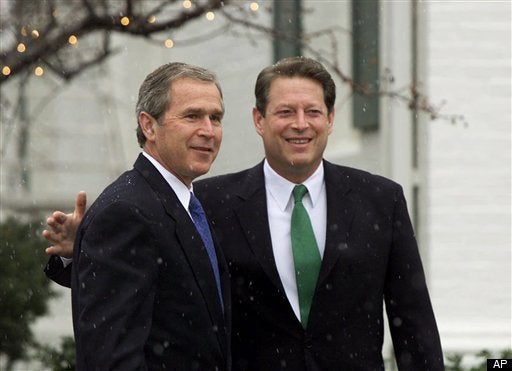
Yesterday, I questioned Nate Silver's argument that the GOP's chances of unseating President Obama in 2012 were weakened by the party's lack of high-favorability presidential candidates. Last night, he responded, showing that favorability ratings for presidential candidates are relatively stable across the primary process. He suggests this disproves my claim that early primary polls "don't matter" and are "useless":
Even at this early stage, polls tell us something — not everything, not a lot, but something — about how the candidates are liable to be perceived next year following the primaries.
In contrast, Mr. Nyhan has written that early primary polls “don’t matter” and that they are “useless” — and several other bloggers have echoed these statements. That just isn’t true. Yes, as a first approximation, the rule of thumb “don’t pay much attention to early primary polls” is probably better than “pay a lot of attention to early primary polls,” given the way that the media tends to overrate their importance. But Mr. Nyhan’s statement is hyperbolic.
There are a number of problems here. First, Silver is confusing two different arguments. My statements that early primary polls "don't matter" and are "useless" are drawn from a different post concerning the utility of primary horse-race and straw polls for predicting a party's eventual presidential nominee. The fact that candidate favorability doesn't change much during primaries in no way undermines that claim.
Second, the fact that candidate favorability is somewhat stable during the primary process doesn't mean it's ultimately a significant predictor of the general election outcome. As Silver later acknowledges, only one candidate is nominated by either party -- whether the favorability of Pat Buchanan or another losing candidate changes is irrelevant. My post yesterday focused on this point, and I stand by it.
To illustrate the burden of proof that Silver's argument must meet, consider how well presidential election outcomes can be predicted using extremely simple models. Here is a plot from Douglas Hibbs's Bread and Peace model, which explains almost 90% of the variation in the last 15 presidential election outcomes using just two variables -- real per-capita income growth and military fatalities:
The model fits the data extremely well, leaving very little residual variation for additional predictors to explain. Moreover, only one of the two biggest outliers fits Silver's hypothesis. It's possible, for instance, that George W. Bush's advantage in favorability helped him overperform against Al Gore in 2000. However, Bob Dole significantly underperformed in 1996 despite having much better early-stage favorability ratings.
The mechanism for this result is that candidates tend to converge to the support level we expect from the fundamentals over time. Consider the example of John McCain. Due to his high favorability ratings, many Beltway insiders perceived him as a formidable general election candidate. But as I predicted back in 2005, his favorability ratings declined over the course of the campaign and he ended up receiving almost exactly the vote share that forecasting models predicted.
My take on this issue is consistent with the argument that Princeton political scientist Larry Bartels made in an edited volume in 2002 (gated). In that chapter, he examined perceptions of personal traits -- a more fine-grained measure of candidate characteristics -- and concluded that "candidates' images are largely epiphenomenal and have only a modest impact on election outcomes":
The aim of this chapter is to provide a systematic test of the conventional wisdom that personality is key in contemporary American electoral politics. Using survey data from the six most recent presidential elections, the contours are examines of the candidates' images (traits), the bases of those images in voters' more fundamental political predispositions, and the impact of voters' assessments of the candidates' personal qualities on individual voting behaviour and on aggregate election outcomes. In stark contrast with the popular conception of contemporary electoral politics as candidate-centred and image-driven, it is argued that candidates' images are largely epiphenomenal and have only a modest impact on election outcomes. This conclusion is underlined by the analysis given of the 2000 (Bush vs. Gore) presidential election, in which the estimated impact of voters' assessments of the candidates' personalities was even smaller than in the previous five elections considered here, although quite probably large enough to be decisive in an election decided by a few hundred votes in a single state.
As in the Bush v. Gore case, anything can matter if the election is close enough. Likewise, nominating a candidate with unprecedented negatives like Sarah Palin would likely cause the GOP to underperform in 2012. Otherwise, however, it's not clear to me that Republicans are significantly less likely to win the presidency as a result of the candidates who are running.